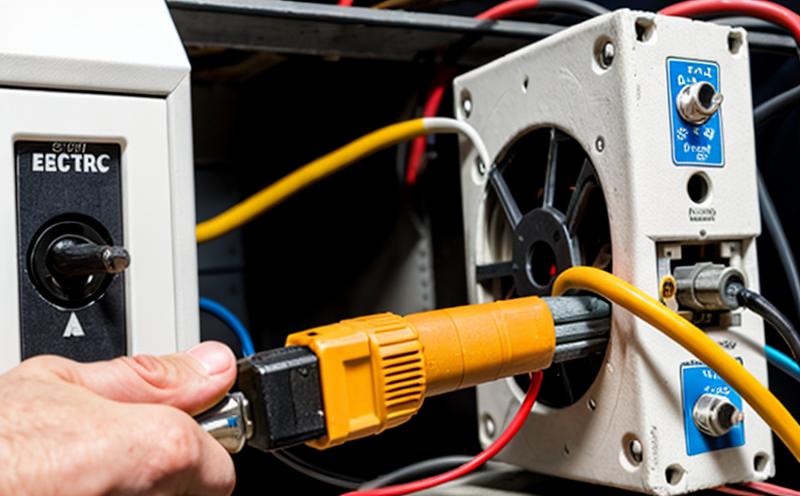IEC 61000-4-40 HVDC Ripple Testing
The IEC (International Electrotechnical Commission) standard, specifically IEC 61000-4-40, is designed to ensure that high-voltage direct current (HVDC) systems meet the required standards for ripple and noise in power supply. This testing ensures the reliability and performance of HVDC equipment by evaluating its ability to handle fluctuations in voltage, which can lead to power quality issues if not properly addressed.
The ripple or noise in a DC system is caused by various factors such as switching devices, capacitors, and transformers. These disturbances can affect the performance of electronic components connected to the HVDC system. By conducting IEC 61000-4-40 compliance testing, we ensure that any equipment designed for use with HVDC systems operates within acceptable limits for ripple and noise, thus maintaining power quality.
During this test, the specimen is subjected to a series of ripple conditions as specified in the standard. The testing apparatus includes a high-voltage DC source capable of producing controlled ripple levels. The equipment under test (EUT) is connected to the supply, and measurements are taken using precision instruments such as oscilloscopes and power analyzers.
Acceptance criteria for IEC 61000-4-40 testing involve ensuring that the ripple voltage does not exceed specified limits under various operating conditions. This includes testing at nominal load, no-load, and with a range of connected loads to simulate real-world usage scenarios. The test results are documented in a comprehensive report that includes raw data, graphs, and interpretations of compliance.
The importance of this testing cannot be overstated for industries reliant on HVDC systems. In sectors like renewable energy, where the integration of solar and wind power into the grid requires stable DC supply, ensuring compliance with IEC 61000-4-40 is essential for maintaining system integrity and preventing disruptions.
| Standard | Description |
|---|---|
| IEC 61000-4-40 | International standard for electromagnetic compatibility (EMC) testing and measurement techniques. |
| IEC 61853-2 | Specifically deals with ripple and noise in DC systems, including voltage and current measurements. |
Applied Standards
The IEC 61000-4-40 standard is a critical component of the broader suite of standards that govern EMC testing. It provides specific criteria for measuring and evaluating ripple and noise in DC systems, ensuring they meet international quality standards. This standard is particularly important in applications involving HVDC systems where fluctuations can impact performance.
| Standard | Description |
|---|---|
| IEC 61000-4-40 | International standard for EMC testing and measurement techniques. |
| IEC 61853-2 | Specifically deals with ripple and noise in DC systems, including voltage and current measurements. |
Why Choose This Test
- Ensures Compliance: Adherence to international standards is crucial for maintaining the quality and reliability of HVDC equipment.
- Guarantees Performance: By testing to these specifications, we ensure that your equipment will perform reliably in real-world conditions.
- Reduces Risk: Compliance with IEC 61000-4-40 helps minimize the risk of system failures due to ripple and noise issues.
- Sustains Quality: Consistent testing ensures that your products meet or exceed quality standards, enhancing customer satisfaction.
Environmental and Sustainability Contributions
The rigorous testing of HVDC equipment to IEC 61000-4-40 ensures that the systems used in renewable energy applications are reliable. This, in turn, supports the transition towards greener power sources by ensuring that the infrastructure supporting these technologies operates efficiently and effectively.
By reducing the risk of system failures due to ripple and noise, compliance with this standard helps to minimize downtime and associated costs. Additionally, by ensuring high-quality equipment, we contribute to a more sustainable future where energy systems are reliable and efficient, thus promoting environmental sustainability.





